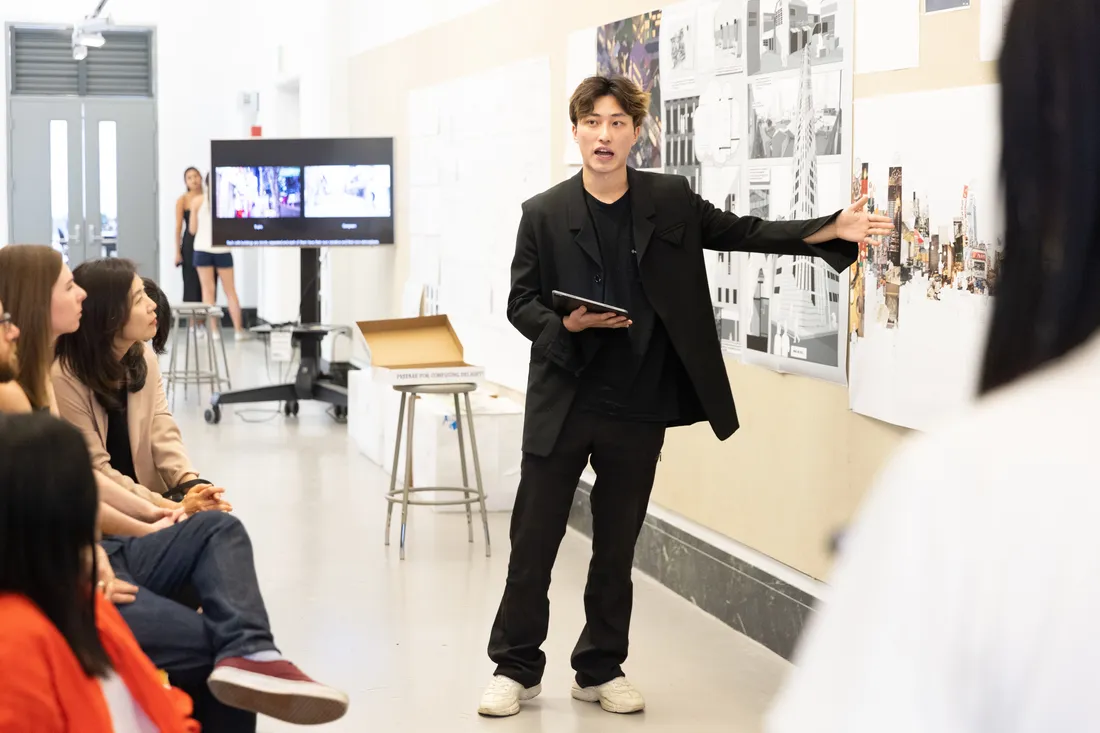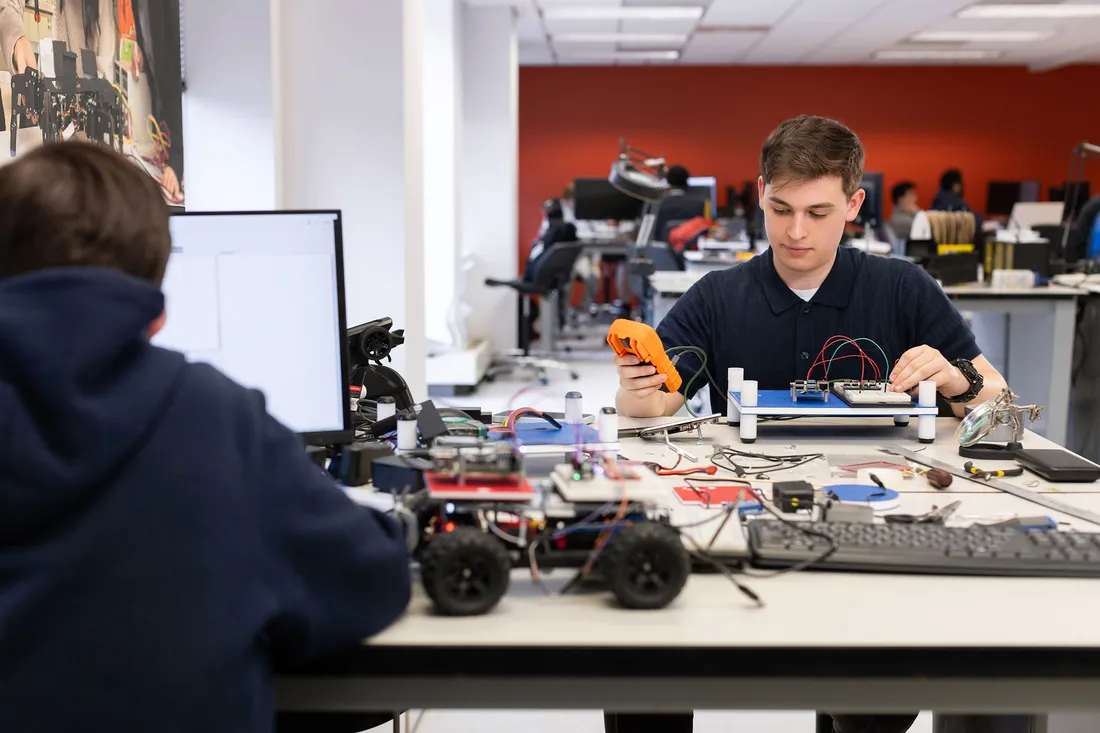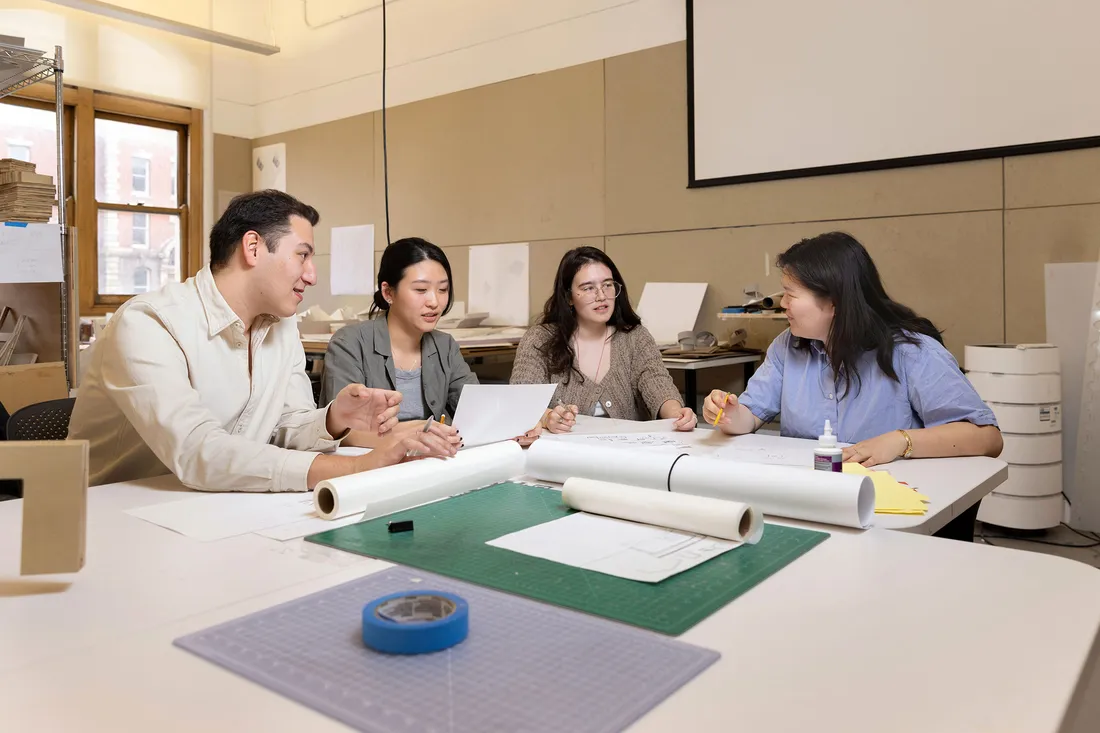
School of Architecture students Aiden McGorry ’24 (left), Lauren Li ’24, Maya Angela Simms ’24 and Lillian Zhao ’24 demonstrate an identity-mapping sketching exercise. Simms and Nikita Goswami ’24 organized a series of workshops using identity mapping designed to help participants explore their identities.
They are all Asian Americans, School of Architecture (SOA) seniors and friends. Their family histories are vastly diverse, and they share conversations about their Asian identity in America and personal experiences. “We thought it’d be really interesting to do a project on those concepts,” says Lillian Zhao ’24. “You can use personal experiences and your architecture education together to inform how you best want to practice or how you best relate to the world.”
Zhao, Lauren Li ’24 and Aiden McGorry ’24 earned a grant from the Syracuse Office of Undergraduate Research and Creative Engagement (SOURCE) to explore the concepts of identity, the Asian diaspora, place, space and design. They teamed up with Nikita Goswami ’24 and Maya Angela Simms ’24, who are members of the National Organization of Minority Architecture Students (NOMAS), to present a series of events for the SOA and the Syracuse University community in celebration of Asian American Pacific Islander Heritage Month.
An Interdisciplinary Exploration of Identity
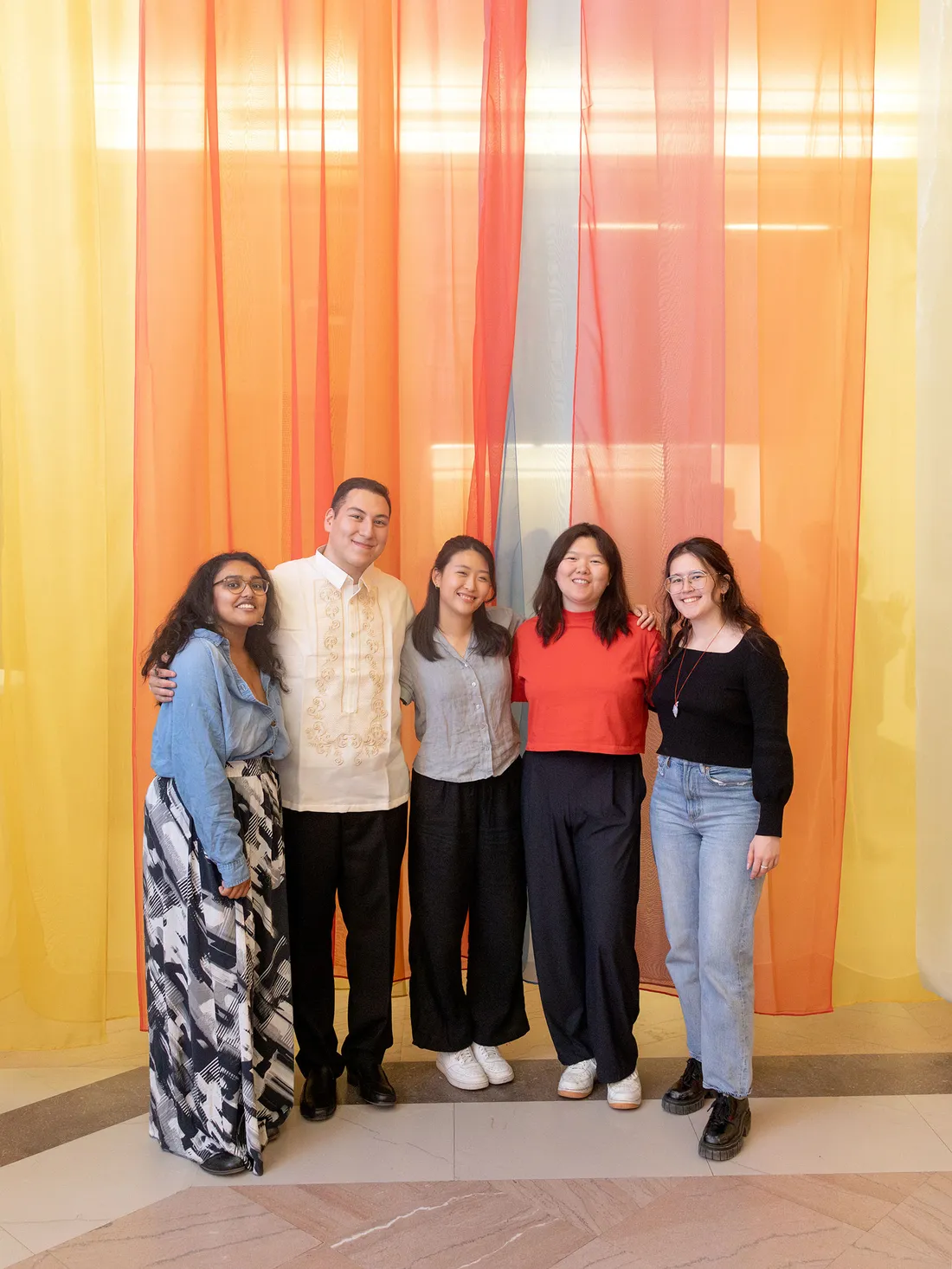
Event organizers Nikita Goswami (left), Aiden McGorry, Lauren Li, Lillian Zhao and Maya Angela Simms stand inside Identity Unboxed, an art installation created by McGorry, Zhao and Li.
As part of their artists’ statement, they wrote that “naming the many layers of identity that we all possess can help create connections between all who inhabit the spaces we create as a community.”
The project included a workshop series and exhibition of the creative outputs; an interdisciplinary symposium, Time, Memory and Displaced Tensions: Mapping Asian American Identities, with a panel discussion featuring sociology professor and Asian/Asian American Studies program director Yingyi Ma, history professor Junko Takeda and Syracuse University Art Museum chief curator Melissa Yuen; and Identity Unboxed, an art installation that transformed the Slocum Hall atrium with layers of suspended 14-foot-long sheer fabrics designed to create an ephemeral experience. “The idea of motion and movement and changing and differing perspectives was a crucial topic for us,” Li says. “We wanted to invite people to move through our installation, walk through it, go around it, pull the curtains apart, touch and move the fabrics. Also, while they’re in motion, we encouraged people to be hyperaware of the context of the environment around them, so part of the event was to recognize that identity is owned by everyone, and we wanted people to see the connections between everyone inhabiting a space.”
Goswami relates the idea of motion and movement to feelings of displacement among Asian Americans who are disconnected from their cultures, an issue that impacts others as well. “If you moved to the U.S. recently or are an international student, you’re kind of in between worlds,” she says. “That extends to all kinds of cultural identities and anyone who’s a minority in some way. There are spaces where they feel comfortable to be who they are, and there are spaces where they may not feel comfortable, because of socialization or even whatever that space means.”
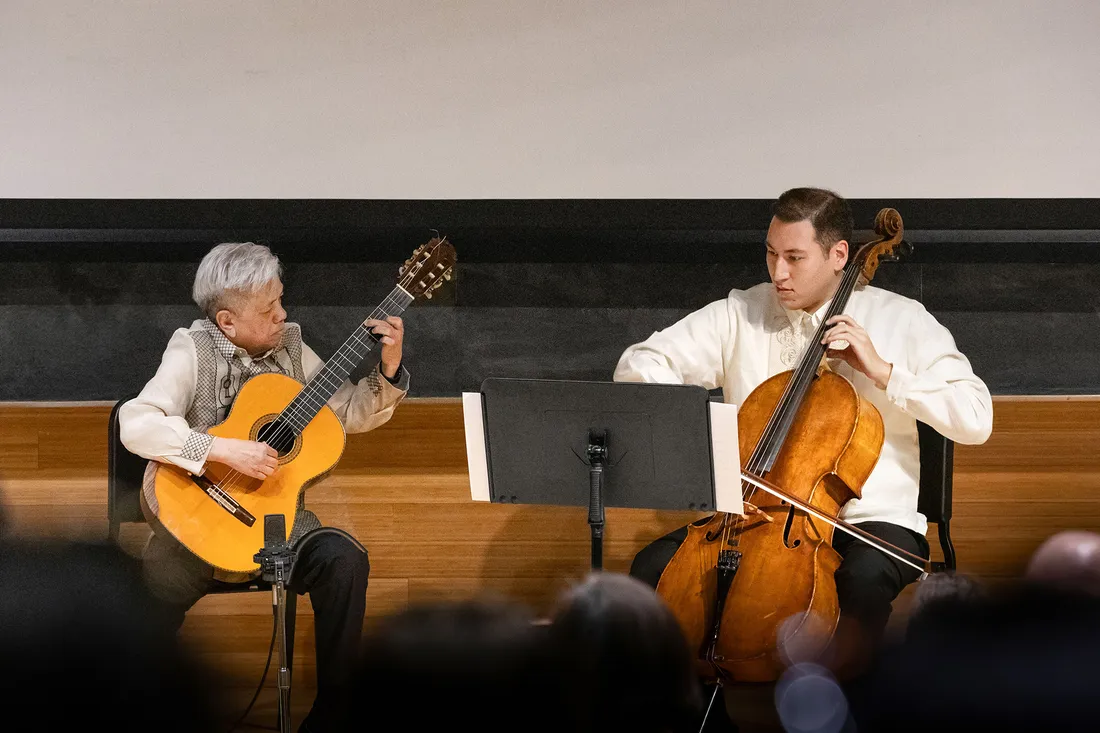
Filipino musician Michael Dadap (left) and Aiden McGorry perform in the Slocum Hall auditorium.
The April 9 event also featured “Art Songs of the Philippines,” a performance by McGorry, a western classical cellist, and Michael Dadap, a Filipino guitarist, composer, conductor and advocate for Filipino folk music and culture. He rehearsed with Dadap and interviewed him as part of his research for the project. McGorry emphasized the importance of the project’s interdisciplinary nature to explore identity, bringing together architecture, human geography and music. “This project is a way for me to explore my Filipino heritage, and we all have a different idea of what it means to be Asian in America,” he says.
In researching the project, the students reflected on their identities and cultures through journaling and interviews with family members and others. During a SOURCE event last semester, they invited people to do identity-mapping exercises, asking them to create drawings that represented responses to identity prompts—questions such as where home is.
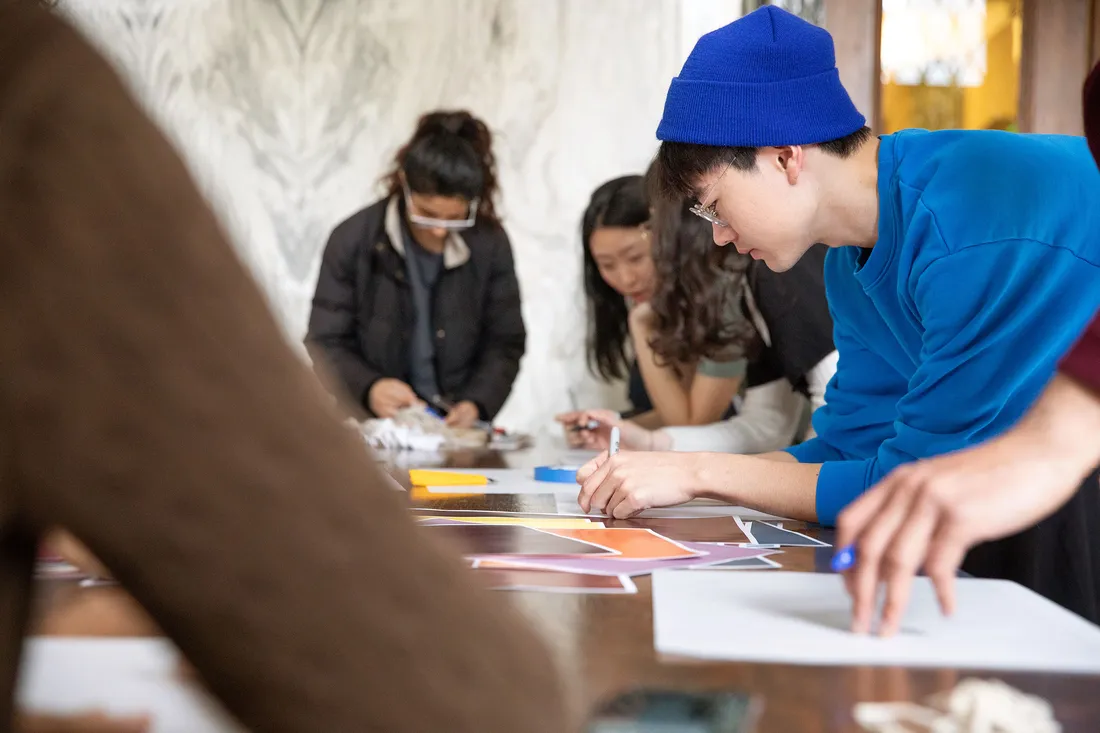
At the workshop on transnational identity, students considered questions like “What physical places do you think of when you think of your identity?” The exhibition of their creative work featured maps of cities connected with strings to each other and kites. “By creating a web of connections between the places we have lived, learned and visited, the workshop aims to celebrate the unique experiences of each individual and the series of choices, coincidences, and chances that brought us all here to Syracuse,” the display read.
Workshopping Identities and Spaces
The NOMAS workshops also centered on this theme. Led by Maxwell School of Citizenship and Public Affairs geography and the environment professor Andre Ortega and SOA Boghosian Fellow Christina Chi Zhang, the workshops explored transnational identity, food and plants, media representation and domestic space. Through these topics, participants examined their relationships to home, spaces tied to their identities and the influence of movement on their identities. The sketches and objects produced through these exercises were featured in an exhibition of spatial collages. “The workshops were for anyone who wanted to try to understand how their cultural identity can manifest itself in space or has not manifested itself in spaces,” Simms says.
Ultimately, the five architecture students hoped the project would serve as a catalyst for action—“to start doing what you want to do or use it to think and see the world as how you want to see it,” Zhao says.

